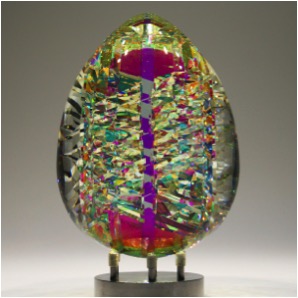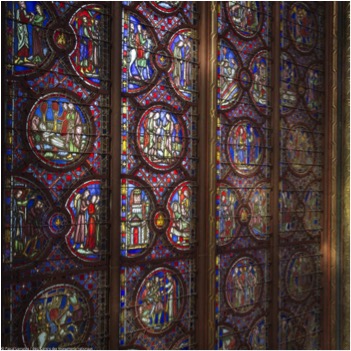As Auckland’s premier double-glazing company, we know that many people can be reluctant to make the jump to a double-glazed home. It may feel like an unnecessary expense upfront, and when you’re renovating or building, it can be tempting to go for what appears to be the cheaper option upfront. However, it’s important not to fall into this trap! Instead, it’s best to choose a window that will help you save money in the long run.
Now that summer is almost here, we’re exploring modern glass options to cut costs on your energy bills (both for cooling in summer and heating in winter). Discover how top-quality double-glazing, thermal insulation, and even acoustic insulation can save you money long-term.
Temperature regulation is, at its core, a matter of physics. Heat wants to migrate to cool places, so in summer the heat wants to migrate indoors, and in winter the heat wants to move outdoors. When it is winter, we prefer to keep the heat indoors. When it is summer, we prefer to keep the heat outdoors. In other words, heat never wants to move in the direction we need it to! Therefore, our job is to reduce the amount of heat that can transmit through your walls, thus keeping your home’s temperature regulated.
Now that the heat of summer is setting in, you might be wishing for a passively cooler home. The best way to ensure that the temperature inside our homes is regulated accordingly is to choose top-quality windows that will insulate it effectively. Before the expansion of the glass industry, there was simply single pane glass. Now, thanks to evolutions in modern technology, there are two key options to choose from: retrofit double-glazing and acoustic glass.
Double-glazed windows are essentially two panes of glass with a layer of air separating them. Since glass is a conductor of heat, heat can leak through single-paned windows. This is often why single pane houses have one eerily cold or hot room, depending on the season.
What makes double-glazed glass so effective is the layer of air between the two sheets. By separating the sheets of conductive material, we prevent the heat from conducting through the glass (as air is not an effective conductor of heat). Thus, instead of making it inside your home, the heat is either reflected by the window or absorbed.
Double-glazed windows come highly recommended as top-quality windows that can save you money in the long run. The right choice for you will depend on your home, your budget, and your needs, so it’s best to talk to an Atlas Glass consultant. Regardless, keeping the temperature regulated will steadily lower your energy bill, thus saving you money this summer (and down the line).

While you’re having your windows retrofitted, it pays to consider other glazing options that may improve your home even further.
Is noise constantly around you? Perhaps you live near a school, loud neighbours, or an airport. Maybe the sound of the 7 am traffic wakes you up when you’d rather sleep in. In all these scenarios, the issue is not just with the noise – rather, that the noise has made its way into your home.
The solution is acoustic glass. Acoustic glass was specially developed with noise in mind and is used in a variety of places, from schools to airports.
Acoustic glass works by absorbing and diminishing the noise through its panes and layers. When used in conjunction with thermal insulation in your walls, floors, and ceilings, acoustic glass can help reduce the amount of noise entering your home. Just as eyes are the window to the soul – windows are at the heart of a home, and choosing top-quality windows makes for a solid and knowledgeable investment.
Modern glass is an incredible way to save money, while also giving significant benefits to your home. As a top company for glass supply in Auckland, Atlas Glass offers a variety of modern glass products for both upgrades and instalments. Talk to the experts on our team about which type of glass is right for you today! If you have any questions about our services, or if you would be interested in receiving a free quote, feel free to contact us.
Timber joinery is a beautiful choice for windows, because the result is so versatile. You can choose to leave the natural grain exposed for a touch of the outdoors, or you can paint over the frame for a smooth, modern finish. Regardless of how you treat your windows, you need to maintain them properly to make sure that their original finish lasts through the years.
It’s not as time-consuming as it sounds, and establishing a routine to maintain your windows is easy if you know what you need to do. From the experts at Atlas Glass, here is a breakdown of how to care for your timber windows.
Dust and bacteria will accumulate on the wood over time, which can cause mould or mildew to start growing (especially in humid subtropical climates like New Zealand). These pesky growths will grow into the grain of the wood, rotting away at it until it’s weakened and unsightly. To prevent this, you just have to wash the timber regularly without drying it out.
You’ll need:
Simply mix a small amount of detergent with a large amount of warm water and sponge away the dirt on the frame. If you’re washing your windows at the same time, make sure to wash them first, otherwise the dirt from the windows will drip onto the frame and you’ll have to start all over again.
Most window companies recommend that you wash your windows twice a year to keep them in good condition (especially if they’re old glass), so it makes sense to do some maintenance of the frames at the same time. After all, they’re the things holding your windows steady.
Wash your windows first, then follow up by washing the timber with the method described above. Check the wood over for any noticeable chips or scratches, and if you find them, repair them fast! Leaving these cracks to their own devices will cause them to move up the wood gradually, splitting it and making it vulnerable to damp and rot. Use a high-quality wood putty to patch the cracks and re-coat the wood once applied and dried.
New Zealand is a subtropical climate, so it is humid and carries a lot of moisture in the air. It’s important to note that this moisture will cause expansion and contraction of the timber, which wears it over time, but if you care for it properly a timber joinery frame will last a very long time.
Furthermore, if you live closer to the coast your wood will be exposed to a higher salt content in the air. This ages the wood at a rapid pace, so if you live coastally you should inspect and wash the timber once a month to keep on top of the salt build-up.
Designing and customising your home is one of the greater joys in life, so take the time to add a personal touch that will last you for years. Talk to Atlas Glass, the favourite Auckland glaziers, about retrofitting your existing windows or rebuilding them from scratch today.
Evolutions in modern glass are giving homeowners a lot to think about these days. You can now choose windows that keep your house warmer, reduce the UV radiation that makes it inside, and even eliminate noise pollution.
If you’re looking into replacing your windows and you’re wondering where to start, this is the blog post for you. Choosing the right material is all about assessing what you need in your home, then choosing the glass that will get you there. Read on to find out what each kind of specialty glass does, and how you can use it to design the ideal home for you.
Double-glazing your windows means placing more than one pane of glass in the same window frame, isolating a layer of air or inert gas (e.g. argon) between the two panes. Instead of passing through a single pane, heat has to pass through two panes and a layer of air, which drastically reduces the amount of heat that makes it through.
On its own, glass is usually fairly conductive, but with double-glazing implemented you’ll find that your house stays cooler in summer and warmer in winter. This option is great for anyone in a cooler climate, or if you’re looking to save on your electricity bill. If you’re truly in a chilly spot, you can double-down on your double-glazing with the inclusion of low e glass to further reduce any heat transfer.
Low e glass is short for “low emissivity glass”, which means that this kind of glass does not radiate absorbed heat energy as much as regular glass does. Microscopic pieces of silver and metal oxide float in an extremely thin polyester coating, drying down onto the side of the glass and working to reflect (rather than absorb) any heat travelling through the air.
Instead of absorbing heat from one side and radiating it out the other, this kind of glass will reflect radiant heat thanks to a thin low-emissivity film coating one side of the pane. In mild climates this kind of treatment is ideal, as it is less expensive than double-glazing but will help your home to retain heat in the winter months.
If you live in a particularly cold climate then coupling low e glass with a double-glazing method will put up a nigh-impenetrable barrier against the cold outside, and will prevent any heat from escaping from the inside.
Finally, we have acoustic glass, which is ideal for anyone living near a motorway or on a busy street. Sound travels via vibrations through air and solids, and the key to stopping noise getting in is to stop the vibrations in their tracks. That’s where the mechanics of acoustic glass come into play.
Acoustic glass is created by bonding two panes of normal glass together using polyvinyl butyral (PVB), creating a membrane that prevents sound vibrations from travelling freely through the glass. The vibrations get through the first layer as normal, but once they hit the PVB membrane and the second layer of glass they are significantly reduced.
You should consider having acoustic glass installed in your home if you live in a noisy environment and crave a quiet, peaceful home that feels removed from the chaos outside. You can bolster the effects of acoustic glass with double glazing as well, quadrupling the effects and reducing sound even further.
No matter which of these glass solutions work for you, Atlas Glass has you covered. We’ve been in the business of window-making for many years, so we can recommend the ideal choice for your home, source the glass, and install the windows with minimal hassle. Curious about where to start? Just get in touch with our friendly team today!
So, the time has come to replace the old glass with the new, and you’re wondering where to start. You’re not alone! Hundreds of Kiwis struggle with the ins and outs of selecting their ideal window design, and most of our clients have come to us at a loss for where to begin.
We’re going to use our industry knowledge to break down the three crucial aspects of window selection. Take a look at the things you need to consider before picking the final product.
The key to choosing the right frame for you is in knowing which material you are after. A large portion of people choose wooden frames for their classic style, and they certainly have their benefits, but there are a variety of options to choose from.
Let’s begin with a classic. Wood is a fantastic framing choice because it fits into almost any style of décor, it’s sturdy, and it’s not particularly conductive of heat. Wood is actually the most energy efficient option (which is important when selecting modern windows). Keep in mind that this option requires more consistent upkeep to prevent the frames from rotting in rain or humidity.
This material is one of the best for a humid climate like Aotearoa, because it is not vulnerable to rotting. Aluminium is lightweight and strong, making it an ideal building material, but it allows heat to transfer freely through the frame. Thus, it’s not as energy efficient as wood.
Both are very strong, eco-friendly and energy-efficient options. Composite windows are made from wood shavings and resin, while fibreglass is made from glass in resin. Fibreglass is more expensive but if you have the means then spring for fibreglass frames; they’ll last a long time and save you a lot of money on the energy bill.
This portion of the decision-making is two-fold, as it involves both glazing and tinting. Glazing refers to placing more than one pane of glass in frame with air or inert gas in between the layers; this reduces the amount of heat that can transfer through the glass. Tinting is when manufacturers put a layer of material over the glass, each with different helpful properties.
Put simply, the higher the degree of glazing, the more energy-efficient your windows will be. Double-glazing is sufficient for a New Zealand climate, however if you’re in a colder corner of the country you might benefit from triple-glazing or even quadruple-glazing. Keep in mind that this will cost more than just double.
As for tinting, you can choose a tint that’s beneficial to your particular circumstances. For example, if you’re choosing large windows in a living space then you might spring for an ultra-violet protective tint, as this is an area people will be spending a lot of time in. You can also choose to tint for privacy, which works well in the bedrooms or bathrooms of a home.
Finally, you need to think about which style your windows will be. These often vary from room to room, however if you’re particularly set on consistency then it’s best to keep the design the same house-round. When considering style, it’s important to think about both the practicalities and the aesthetics.
For example, double-hung windows are a very common choice because they’re a space-saver. They don’t swing in or out (so you can put furniture right underneath), and they have a clean finish. Alternately, floor-to-ceiling windows are fantastic for bringing natural light into a living space, but putting them in a bedroom might compromise your privacy.
If you’re looking at all of this and you’re still not sure what the right choices are, don’t be afraid to consult a professional who can help to guide you.
We’ve helped hundreds of clients in their home renovation journeys. Get in touch with the great team at Atlas Glass today and start on your very own journey with us.
At Atlas Glass, we find that most people think that window design is all about glass. This is understandable! But the truth is, windows are comprised of numerous parts and accessories, each of which has a definite name and purpose within the window industry that not many know of.
If you’ve been referring to parts of the window as the ‘top bit’ or ‘bottom bit’, you might want to brush up your knowledge on window terminology. Join in for a crash course to learn what each part is called, and the purpose it serves!
Every window has three basic parts – the frame, the sash and the panes.
If you’re looking at your window head-on, the frame is the piece surrounding the window. Frames surround the entire window system and provide support.
The sash is the moveable part, both horizontally or vertically, that holds the glass in place. With casement windows, sashes swing open, on double-hung and single-hung windows, they usually slide up and down to open and close the windows.
In simple terms, panes are the glass. Panes are connected to sash or muntins, which are grid-like bars that feature in some windows. Windowpanes can be single, double or even triple glazed to provide insulation. Double-glazing refers to creating a window that consists of two glass panes separated by vacuum or gas to reduce heat transfer.
The basics can be broken down even further into the sum of their components. If you delve deeper, you can see that there are innumerable small yet intricate parts that make up a window and assist in its smooth functioning.
Let’s start with the frame. This component of a window can be broken down into three smaller components: the jamb, the sill, and the head. There’s also the casing, which is a very important aspect of window design.
Jambs are the vertical boards that are found between the head and the sill.
Sill is down the bottom, where you can rest your arms if your sitting by the window!
Opposite to the sill, the head is the top horizontal part that forms the top of the frame.
Casing is the decorative frame or moulding that is found around the window to cover the space between the jamb and the wall. Sometimes, it can be seen covering space between two window frames.
While these parts aren’t a part of the actual sash, they do help it to function. The parts included depend on the type of window installed.
The Balance is found right at the center of the window. True to its name, it provides balance as the sash opens and closes.
Usually found on double-hung windows, this is the part where two sashes meet in the middle – the bottom part of the upper sash and the upper part of the bottom sash.
The Jambliner is a strip that is usually found on the side of the window frame. It gives the window sash a snug fit.
A lift, as suggested by the name, is what makes it possible to raise the window in case of single or double hung windows.
A sash lock is the mechanism that is used to lock single and double hung windows. It is usually located on the operating sash and is used for preventing the sash from opening in its frame.
A stool is the horizontal board on the inside of the window, against the sash.
Whether you’re refurbishing your house with retrofit double-glazing or getting new timber joinery installed in your brand-new home, You can count on the experts at Atlas Glass. Contact us today for more information.
If you think that modern glass is only used for practical residential and commercial applications, then you might be pleasantly surprised to find out it’s also used as an art form. We scouted around the globe in search of some of the best glass sculptures, so sit back and let us take you through our favourites!

One of the most interesting pieces of glass art comes from Luke Jerram. Since 2004, the artist has been turning viruses and minuscule pathogens into unique and otherworldly glass sculptures. His concept of sculpting something that is usually invisible to the naked eye has brought an entirely new dimension to the layman’s understanding of your average bacteriophage. It’s one thing to read about these types of viruses, but it’s another thing entirely to see what they actually look like! Who knew these deadly bacteria had unnatural shapes with sharp, weapon-like edges. From representations of swine flu to Ebola, Jerram’s made-to-scale glass sculptures are spine-tingling, yet very original!

Sergio Redegalli is the creative mind behind Cascade – a glass sculpture displayed in the Adelaide Botanic Garden. In 1988 he was commissioned to provide a piece for the World Expo being held in Brisbane at the time, with the theme of “Leisure in the Age of Technology”. Taking an interesting view of this theme, Redegalli produced a sculpture that would have been nearly impossible without the aid of technology, which symbolises the leisurely fall of a wave. The astonishing 12-ton glass sculpture has 500 precision-cut pieces of 6mm clear glass, all glued together to create the illusion of a cascading wave.

Jack Storms is one of the more contemporary artists who has already made his mark in the history books of glass artistry. Inspired by the Fibonacci principle, he has developed an incredibly rare type of glass artwork that takes 24 labour-intensive weeks to complete. The process includes cutting a core of lead crystal, then polishing and laminating it to create reflective mirrors. It is then wrapped in optical glass to create a rainbow-colour effect when light passes through. It then goes through hours and hours of repetitive grinding, cutting, and polishing to create the smooth end result you see above. Because of his incredibly unique work, his glass art has been commissioned for the President of Nigeria, while two of his glass artworks also appeared in the hit Marvel franchise film “Guardians of the Galaxy”.

Carol Milne is famous for her unique and intricate Knitted Glasswork. It was in 2006 that she discovered her fascination for knitting, mould-making, and kiln-casting, and by combining these she created the award-winning Knitted Glass. Her work claimed the Silver Award at the 2010 International Exhibition of Glass in Kanazawa, Japan. Her work is absolutely fascinating; by creating the traditional looping patterns of a knitted piece with melting glass, she has created something entirely unseen in the modern world of glass work. She has said that her work is inspired by the image of society. “I see my knitted work as a metaphor for social structure. Individual strands are weak and brittle on their own, but deceptively strong when bound together.”

Not exactly an entirely glass sculpture, but this work deserves a spot on our list: Kolonihavehus by Brooklyn-based artist, Tom Fruin. The work is an installation made from 1000 pieces of salvaged plexiglass and scrap metal, which have been reworked into a colourful glass house with indoor lighting. As a “3D evolution” of his previous work with salvaged drug-bags, his work proves that you can still make something great and beautiful even from scrap. Truly, one man’s trash is treasure to another. Tom Fruin’s work is now exhibiting in Brooklyn Bridge Park in New York.

One of the best-preserved medieval masterpieces in Europe is the Sainte-Chapelle. It’s located in the Palais de la Cité, the old royal palace of the kings and queens of France. The chapel’s window design is one of the city’s highlights, and is regarded as a glorious masterwork that transcends time. You wouldn’t have guessed that it was made in the 1240s, as its stained-glass windows are intricately made to depict biblical, local, and political stories. With 15 panes standing at 15 metres high each, these beloved moments in history are truly a sight to behold. There are 1,130 biblical figures depicted in the glass spread over its huge windows, and one large rose window. It is a true testament to the beauty that will result from dedicated time, energy, and belief in a greater idea.
Glass windows are a versatile instrument that can be used for religious ornamentation, an art form, or your home’s ventilation and insulation! At Atlas Glass, we make sure to provide only the best glazing services to complete your stunning home. We are experiencedAuckland glaziers who can take care of your home’s retrofit double glazing and timber joinery glazing for a home you can call your functional piece of art. Contact us to learn more.
With the warmer months approaching, it’s time for your annual spring cleaning, and what better way to start on this project with your double glazed windows? They provide so much help with your home’s thermal insulation that they truly deserve a good scrubbing. Window cleaning may not be your favourite task, but there are ways to make it simple, easy, and fun with some window-cleaning hacks. We share some useful tips to start on this important housework project!
Skip the harmful cleaning chemicals that can be too harsh for you and your windows. Cleaning agents with chemicals can create an electrical charge that will attract more dust that sticks to your windows, creating that infuriating, filmy effect. Plus, it’s easy to DIY a window cleaner that you know is safe and gentle. It’s cheaper, natural, and does a better job as a cleaning agent.
Mix ¼ cup rubbing alcohol with 1/3 cup of vinegar in a spray bottle and fill to top with distilled water. If your windows are covered in hard stains, you can concoct a hard water solution made with vinegar, dish soap, and lemon juice. Spritz and let it sit for 10 minutes. You can then scrub the hard stains away!
Using natural products can also be extra helpful if you have timber joinery, as natural formulas and a soft cloth won’t damage paintwork or glazing when you're cleaning the dirt, dust, insects, and grime off of them.
Microfiber cloths are great to partner with your DIY cleaning solution when you’re cleaning your windows. They are made from synthetic fibres, which are not treated with chemicals, and the way they are constructed means they glide any dust off of the window without gripping the surface. Surface friction is what creates the streaks you sometimes get from paper towels, so you can neatly avoid this frustration and leave your window dust-free.
When it’s possible, time your window cleaning for when it’s cloudy or shady outside. If you clean your windows on a hot sunny day, the sun’s heat may dry your cleaning solution to your window’s glass too quickly. That will leave behind stains and residue that may be harder to scrub away.
Dusty blinds can undo all of the hard work you just exerted cleaning your windows to perfection, but how do you dust blinds easily? You can do this with the help of your kitchen tongs. Just wrap rags around the pair of tongs and secure them with rubber bands. Clamp them onto the blinds and drag left and right to pick up excess dust. Hey presto, clean blinds!
Window screens seem like an impossible cleaning task when you don’t approach it with the right tools; there’s an easier way to do it than beating them with a rag. Use your trusty lint roller—that’s right, a lint roller—to clean off any dust and lint that clings to the wire mesh. You’ll save yourself a lot of time and frustration, trust us.
Cleaning windows can be daunting, especially when you have many tall windows in your home. But if you have an air compressor stored away, it can make all the difference. Don’t stress about those hard-to-reach, hard-to-clean places. Instead, blast away the dust and debris with a handheld air compressor!
Putting in an effort to making them sparkling clean can go a long way when it comes to extending the lifespan of your double-glazed windows and wooden frames, and it’s not too hard once you get the hang of it.
The team at Atlas Glass are experts in glazing and double-glazed windows with timber joinery. Our Auckland glaziers can provide you with beautiful windows that you’ll be proud to keep shining, so call us today to give your home a modern touch.
A commonly overlooked element of window design is tinting. This is fairly understandable, as there are more important aspects to consider first; joinery, glazing, materials, among others.
But for those of us who want to fully explore the options we have around installing or restoring windows, tinting is well worth looking into, as it has a number of advantages. These benefits include security, reducing glare, and of course, increasing privacy. For more details, read on!
It’s not going to make your windows bulletproof, or even completely shatterproof, but window films do help keep windows together in the event that they do break. Loose glass can be a major safety hazard, so if there’s a chance that a stray football or heavy storm is going to break your windows, a window tint does go that little bit toward better safety for you and your family.
Securing a home against theft is near the top of all homeowner’s priorities, and there are a number of ways to do it. You may already have a good security system and are thinking of more ways to bolster your home security. A one-way window tint film could do just the trick.
Essentially, if a burglar can’t see into your home easily, the chances of them attempting a break-in drop dramatically. Imagine it from their perspective; they have no idea what they’re going to grab—they don’t even know if you have anything worth taking at all. Being able to see inside a home is a prime motivator for robbery, since most theft is opportunistic, not planned. If someone can’t glance in your home and plan their entry and exit in a moment, they won’t bother, as there’s too much risk involved.
This also applies to commercial settings, like offices. If the windows are tinted, people are less likely to smash and grab, as they have no information on whether or not the office is empty.
Sometimes you have a view so good that it seems a shame to cover it up in favour of privacy. One-way window tinting allows you keep your windows open, and let the sunshine in to warm and brighten your home without putting you in a position where you feel like you’re on display for passers-by to see.
Another point for both home and commercial locations—window tints can help you manage the heat in a space. Whether you’re at home or at the office, you could have concerns about your power bill, especially through the summer, when you’re more prone to running air conditioning as often as you can.
Window tint films can help keep your space cool by deflecting some of the heat from outside and shave off a portion of the price of air conditioning. You might be surprised by how much you can save depending on the size and shape of your windows.
This also means you can more effectively manage hot spots, as these can help you get hot spots under control. Hot spots are typically more of an issue for residential homes, where you might find that certain locations build up heat much faster than anywhere else.
Ever tried to use a computer during the day with the sun behind you? Screen glare can be one of the most frustrating issues to deal with when you move into a new space, and suddenly realise your windows bounce light right off your TV or computer screen. Glare can cause eye strain, and even lead to headaches.
Window tints can mitigate this issue, and this can be a way to keep large windows as a design element in your office, without jeopardising all of the staff who sit facing away from them.
The team here at Atlas Glass has been designing and installing windows for over four decades. If you have any questions at all, don’t hesitate to reach out and contact us—we’ll be happy to help!
Timber frames offer many advantages for home builders and renovation projects alike. They can be erected quickly, cheaply, and easily, yet still maintain the durability to keep your home safe and structurally sound for years to come.
Due to its strength, timber framing gives you a wealth of freedom when designing your space. With fewer load-bearing walls necessary to support your structure, timber frames make possible large, open spaces, and even vaulted ceilings. Their attractive appearance also makes them eligible for outdoor exposure. Whatever your reason for choosing timber framing, be it their natural and sustainable materials, insulation benefits, their simplicity, or their rapid build time, here’s what you need to know before you get started.
Timber framing is commonly confused with post-and-beam style structures, which use metal fasteners to secure the joinery. Timber framing, however, is a bit more elegant. Wooden pegs (or tenons) are used to secure the timberjoinery (with slots called mortises). Timber framing is made up of four principle elements:
The type of wood matters when crafting your timber framing. Different types of timber will have different advantages and disadvantages, such as cost, appearance, and durability. Consider these wood types for your timber frames:
When it comes to your timber framing, always sweat the small stuff. You’re going to ask a lot of your frames, so take care that they’re assembled correctly, with an eye for quality and endurance.
Timber framing is a great look for any doorway or window frame, which is why Atlas Glass offers the finest glazing options for timber joinery NZ has to offer! Give your home the touch of class it deserves. Contact Atlas Glass today to learn more.
Double glazed windows are an enormous advancement in modern window technology. They offer a number of advantages for homeowners - from making your homes more comfortable and convenient, to saving you a ton of money on heating bills in the long run.
But what about triple, or even quadruple glazed windows? Yes, these exist – though often the layman is unaware of them. Today, we tackle the science behind glazing and discuss the differences of a double, triple, and quadruple glazing, and the reasons why you might consider each kind.
Let’s start off with the most basic option – double glazing. Double glazing in New Zealand is the optimal choice for our general climates, although that can vary from region to region. The way they work is fairly simple: glaziers construct a double-glazed window by placing two panes of glass – of which there are various kinds – into a single frame. The gap between these two panes is then filled with air - or an insulating gas, like argon - in order to prevent drafts, and the direct transfer of heat through the window.
Double-glazed windows are great at keeping your home comfortable, no matter the weather. They help keep your home warm during the winter, and cool in the summer, because heat on either side of the glass has to work much harder to move through all of the layers. Two panes of glass per window cut your heat loss by half in winter, and prevent twice as much heat from entering your home in the summer. It’s an all-around great way to balance out your home’s internal environment. Double glazed windows can also play the role of reducing noise, improving security, and replacing thermal drapes. On top of all of that, they also provide easy maintenance.
A triple glazed window, on the other hand, contains not just two but three layers of glass, also separated by air gaps to provide high levels of heat retention. They are equipped with high insulation performance and have been a popular choice for homeowners in colder climates.
Also offering an extensive array of benefits, triple glazed windows are one of the best options for homeowners who experience extreme weather. These windows are resistant to condensation and reduce sound transmission even more than their double-layered counterparts, and the three layers of glass provide greater security.
Quadruple-glazed windows have become an increasing trend, especially in Nordic countries where the temperature is significantly colder than most other countries. These ultra-insulated window systems are easy products to sell, as they are generally only sought-after in climates that more closely resemble Antarctica than Malibu.
So, you may be wondering which of these options to pick – they all seem to do a fantastic job! Though all have great benefits to keeping your homes warm during winter and cool during summer, there are two main things to consider when making your choice: weight, and your climate. Increasing the degree of your window glazing inherently means more window panes, making each individual window heavier with the additions. This makes them potentially more difficult to build for, and install.
You also have to consider the climate. Triple and quadruple-glazed windows are typically more expensive, and may constitute an over-investment if you live in warmer climes. However, if your weather resembles the Arctic, then triple or quadruple-glazed windows may be right for you.
Replacing everything all at once can be a little bit daunting, and we certainly don’t blame you. Talk to us about your options around retrofit double glazing, which can alter your existing windows, thus saving you both money and hassle. Atlas Glass can provide glazing design choices that are ideal for your home. We specialise in retrofit double glazing for timber joinery, upgrading your windows for a more comfortable and convenient lifestyle. Get in touch today!